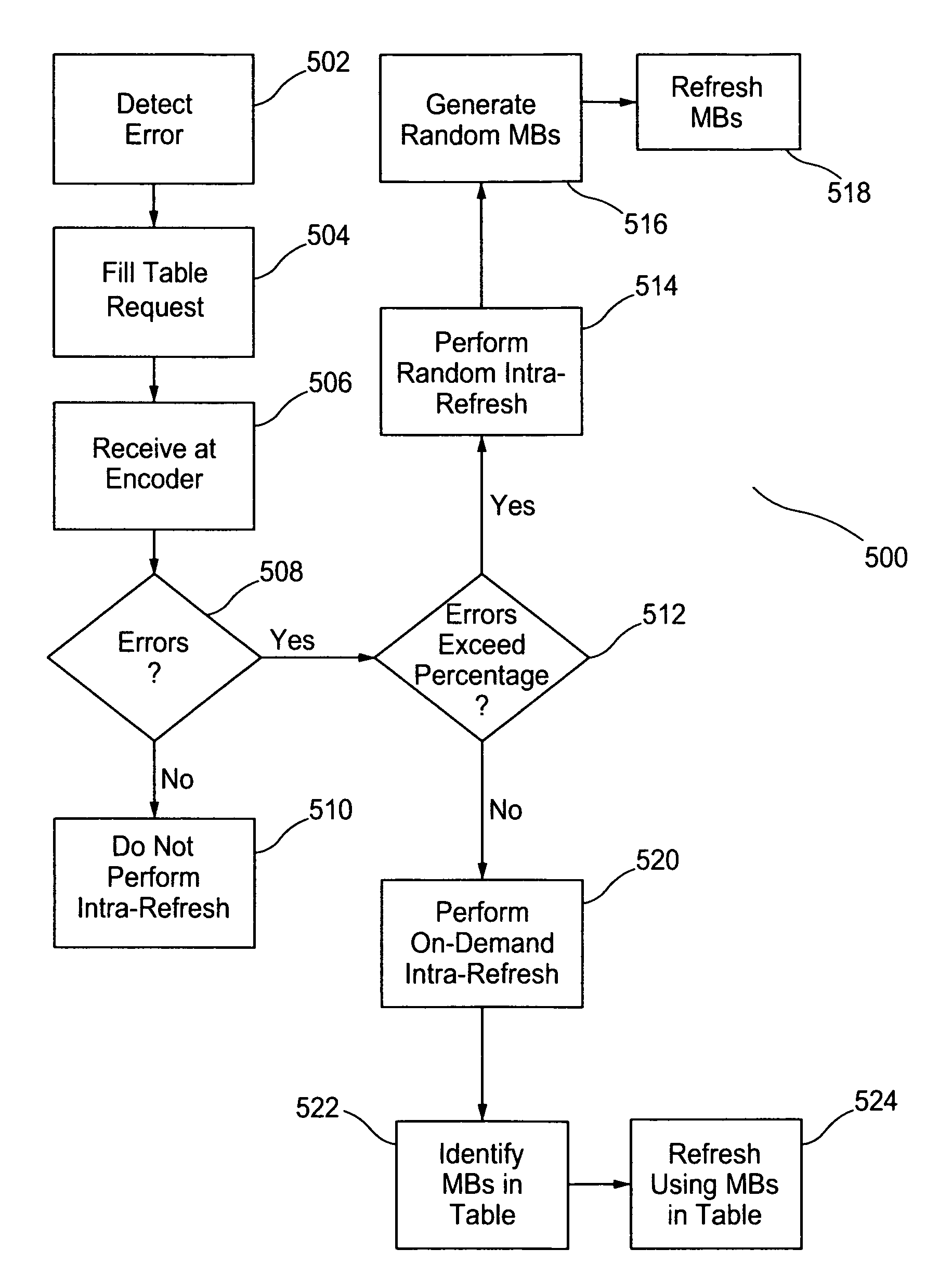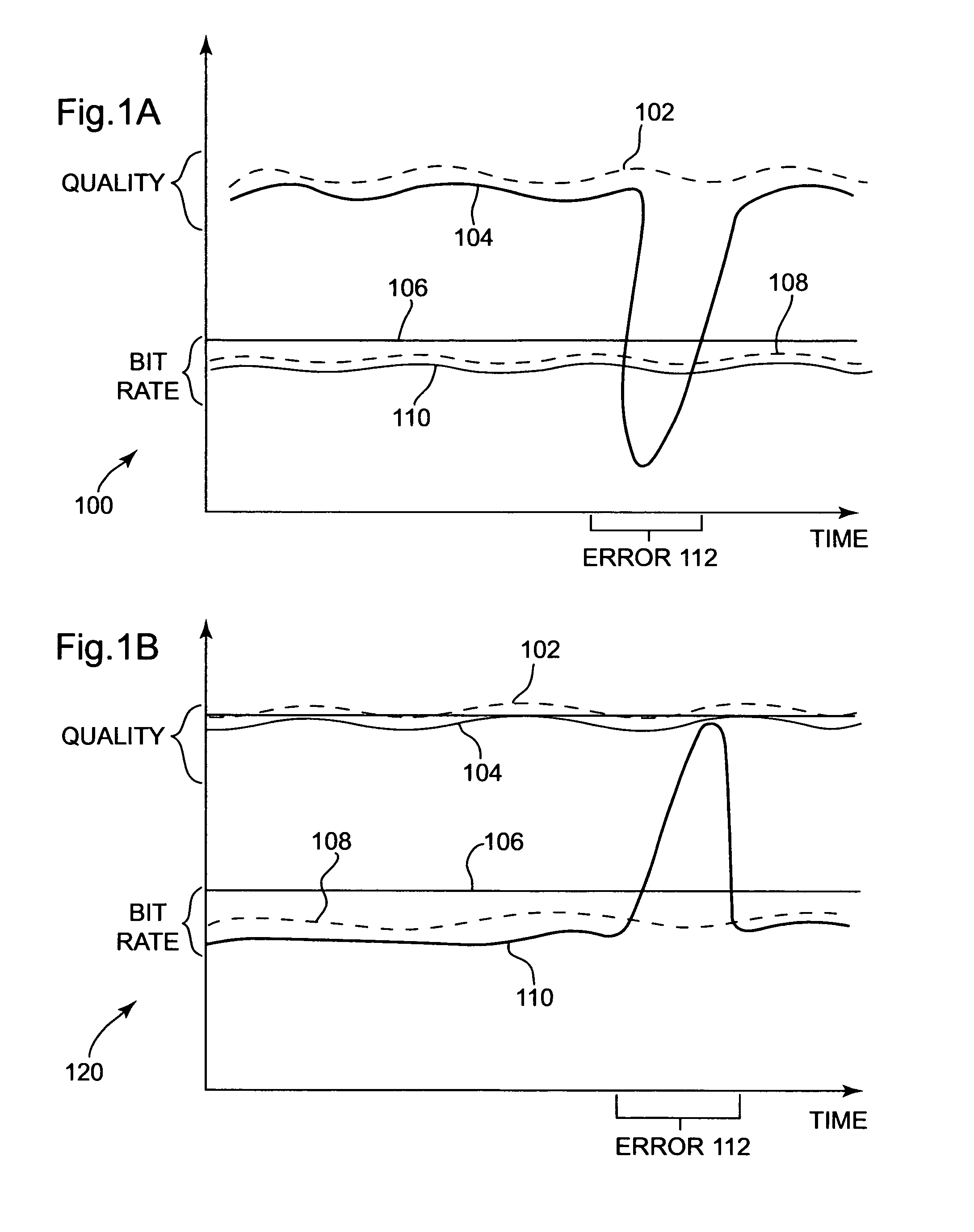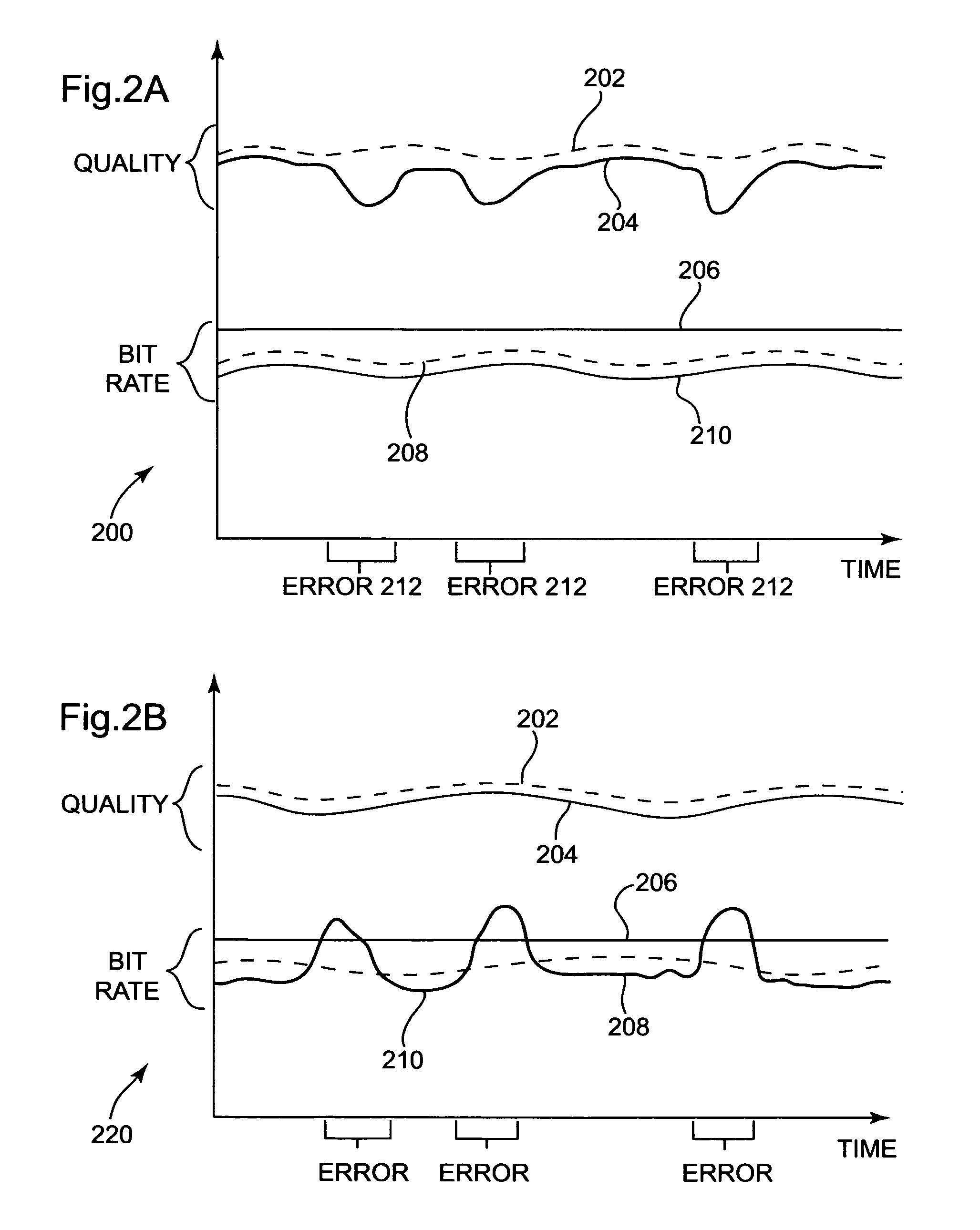On-demand intra-refresh for end-to end coded video transmission systems
a video transmission system and video signal technology, applied in the field of video signal transfer over a network, can solve the problems of video transmission system introducing errors that manifest in the decoded image, system with latency constraints may be faced with losing blocks, and undesirable use of intra-frame predicted frames, etc., to reduce or eliminate the use of intra-frame refresh frames. , the effect of improving quality performan
- Summary
- Abstract
- Description
- Claims
- Application Information
AI Technical Summary
Benefits of technology
Problems solved by technology
Method used
Image
Examples
Embodiment Construction
[0029]Aspects of the invention are disclosed in the accompanying description. Alternate embodiments of the present invention and their equivalents are devised without parting from the spirit or scope of the present invention. It should be noted that like elements disclosed below are indicated by like reference numbers in the drawings.
[0030]FIG. 3 depicts a system 300 for transmitting and receiving video signal data according to the disclosed embodiments. System 300 may be any system or collection of devices that connect over a network to share information. Video content may be delivered real-time such that very little or no latency is experience in transmitting the video signals. The video signals include frames of images delivered to the viewer. Low latency video transmission systems, for example, may be desirable for security monitoring.
[0031]Digital media server 302 generates the video content to be transmitted. Digital media server 302 may be any device, console, camera and the ...
PUM
 Login to View More
Login to View More Abstract
Description
Claims
Application Information
 Login to View More
Login to View More - R&D
- Intellectual Property
- Life Sciences
- Materials
- Tech Scout
- Unparalleled Data Quality
- Higher Quality Content
- 60% Fewer Hallucinations
Browse by: Latest US Patents, China's latest patents, Technical Efficacy Thesaurus, Application Domain, Technology Topic, Popular Technical Reports.
© 2025 PatSnap. All rights reserved.Legal|Privacy policy|Modern Slavery Act Transparency Statement|Sitemap|About US| Contact US: help@patsnap.com



